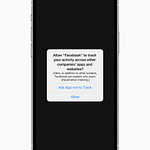Picture yourself fifty years from today. The year is 2071.
The world is different. Cars are flying. We've occupied Mars. We've figured out how to turn sand into gold. You look around and notice something strange. You notice, that the only color of clothing that people wear is green. Why green? You have no idea. Everywhere you turn, green.
You try to find out why this is. You ask someone, and they look at you puzzled.. green is good, they reply. You search the great internet machine that is now plugged into your brain. It comes up with the answer that green is good. Green is a symbol of peace. Green is the color of the universe. Green is natural. Green is the only acceptable color for clothing. Green is good.
You try to dig deeper on where this strange notion or idea came from? You find thousands of articles referencing how green is good. You search some more and find fashion blogs talking about the latest green fashion line. Health blogs emphasizing the unique mystical health benefits of green cashmere. Search some more, and you find state sponsored messages emphasizing going green.
Yet you can't find a single article explaining why. No reference to any other colors for clothing. No attempt to question this now held belief. What is going on here?
George Orwell first popularized a term for this type of dystopian future. He called it, a memory hole.
What's a memory hole?
A memory hole is any mechanism for the deliberate alteration or disappearance of inconvenient or embarrassing documents, photographs, transcripts or other records, such as from a website or other archive, particularly as part of an attempt to give the impression that something never happened.
In the book, the Party's Ministry of Truth re-created all embarrassing historical documents, re-writing history to match the often-changing state propaganda. These changes were complete and undetectable.
Now my green clothing example is ridiculous, but it conveys the point.
Today, the information that we consume comes to us in small summarized byte size chunks. Rarely do we access the source of that information and by the time we do, that source may have already disappeared.
Let me explain. An article gets published, say on the New York Times. Summaries of that article get distributed across the globe on news aggregation sites. People tweet summaries of the summaries. Reddit groups create memes of those summaries. Those memes get distributed on WhatsApp messages and Facebook groups. Before we know it that information has spread across the globe. After a day, the New York Times may decide to remove that article yet the information still spreads.
In fifty years many of those aggregation sites may have disappeared and when trying to reference the original article, the link is now broken. Yet, the information it spread still exists.
Historians will look back to try and understand how we made the decisions that we made. Over time, those decisions will disappear off the internet and they will ask themselves, what is going on?
This is the exact problem that this weeks dApp of the week is trying to solve.
Arweave and the Permaweb
I first met Sam Williams, founder and CEO of Arweave, in a Berlin bar in 2018. It was there that Sam explained to me the idea of building, what he called, the Permaweb (the permanent web). A way to use blockchain technology, to create permanent information storage.
Permanent information storage?
The idea came to him while on a hike. He was busy completing his PHD, and the world was at the height of fake news and Trump. Sam thought about the George Orwell memory hole. He figured that the memory hole wasn't describing a dystopian future, but our actual present day reality.
He then thought about blockchains.
He realized, blockchains are massive decentralized data replication networks. They have no central point of failure. While all internet archives that exist, have central points of failure. He asked himself: What if you put news on the blockchain? It would become un-memory holed!
And if you could put news on the blockchain, why not have a permanent source of truth and storage for all information?
And with that, Arweave was born.
Arweave today
Move forward to today and the Arweave network is growing exponentially.


As an open protocol, developers around the world are starting to realize the benefits of permanent storage and thinking of new models that can be applied in a world where digital archives can be permanent, verifiable, and tamper resistant.
Arweave has a marketcap of $430m today and I believe it is grossly undervalued.
When asked what are the potential use cases for permanent storage and why I’m so excited about Arweave’s potential.
Here are some off the top of my head.
The internet archive and storage of the worlds information
Land title registrations being digitized and permanently stored
Permanent vault for any contracts
Journaling software that can be passed on to future generations
Storage for any and all NFTs
Digital photos that you never want to lose
Any and all books to be stored forever
Every political speech ever given permanently stored
Those are just some of the use cases.
Ask yourself, what is the value of the network that contains and stores the worlds information? What is the value of the network that can prove, without a doubt, that this is the verifiable, original, untampered source of anything digital.
I call that knowledge, Proof of Knowledge and my bet, it’s in the trillions of dollars, and at the same time, priceless.








